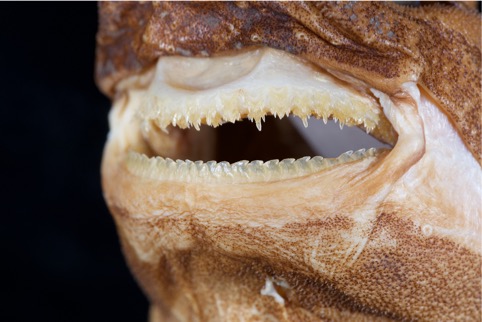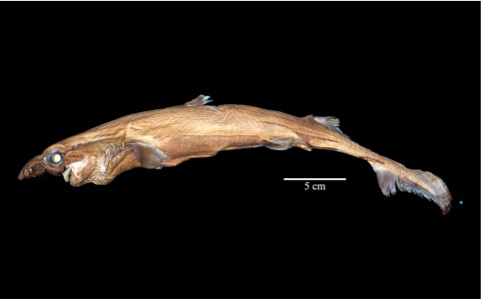Like finding a needle in a haystack. This summer a team of scientists discovered a new species of shark measuring less than a foot long and weighing under 2 pounds full-grown.
This miniature, “glow-in-the-dark” shark is a member of the Lanternshark family (Squaliformes: Etmopteridae), which was serendipitously found 1,000 feet below the Pacific Ocean off the coast of the Northwestern Hawaiian Islands. It has taken more than 17 years to identify this new species (Etmopterus lailae) since it was first discovered but was well worth the wait as this elusive creature is yet to be seen in the wild.
450 known species of sharks
It often takes many years to identify a new species from the time it is discovered to the moment the news is shared with the scientific community. Results of the discovery of Etmopterus lailae were published in the journal Zootaxa . Stephen M. Kajiura, Ph.D., study co-author, a professor of biological sciences and director of the Elasmobranch Research Laboratory in the Charles E. Schmidt College of Science at Florida Atlantic University, is among the team of scientists who painstakingly worked on this project, which began while he was still in graduate school at the University of Hawaii. “There are only about 450 known species of sharks worldwide and you don’t come across a new species all that often,” said

Kajiura. “A large part of biodiversity is still unknown, so for us to stumble upon a tiny, new species of shark in a gigantic ocean is really thrilling. This species is very understudied because of its size and the fact that it lives in very deep water. They are not easily visible or accessible like so many other sharks.”
New species
At first, Kajiura and his collaborators did not realize that they had discovered a new species until they submitted their research findings to a journal. The reviewer told them that the shark was not what they originally thought it was and that it might be a new species. Kajiura worked with David A. Ebert, Ph.D., study author, a taxonomist and program director of the Pacific Shark Research Center at Moss Landing Marine Laboratories in California, to identify this new species, now housed in the Bernice P. Bishop Museum in Hawaii.
Identifying the Etmopterus lailae required an extensive list of measurements, diligent categorization and thorough comparisons with other museum specimens.
Deep sea environment
“The unique features and characteristics of this new species really sets it apart from the other Lanternsharks,” said Kajiura. “For one thing, it has a strange head shape and an unusually large and bulgy snout where its nostrils and olfactory organs are located. These creatures are living in a deep sea environment with almost no light so they need to have a big sniffer to find food.”
Some of the other distinctive characteristics of this new species are its flank markings that go forward and backward on their bellies, a naked patch without scales on the underside of its snout, as well as internal differences such as the number of vertebrae they have as well as fewer teeth than the other sharks. Like other Lanternsharks, the Etmopterus lailae is bioluminescent and the flanks on the bottom of its belly glow in the dark. These markings on its belly and tail also were specific to this new species.
Glow in the dark
There are a number of hypotheses for why Lanternsharks glow in the dark including mate recognition to ensure they are mating with the right species, serving as a form of camouflage to protect them from predators in the deep sea and using bioluminescence to act as a lure to attract little fish or shrimp.
“The research team’s discovery of a new shark species is evidence of how much is still undiscovered in our world,” said Ata Sarajedini, Ph.D., dean of FAU’s Charles E. Schmidt College of Science. “This new species is the tip of the iceberg for what else might be out there and the great potential for all of the yet-to-be undescribed species that still need to be explored.”

The team of scientists also include Yannis P. Papastamatiou, Ph.D., Florida International University and Bradley M. Wetherbee, Ph.D., University of Rhode Island. In 2000, Kajiura and Wetherbee discovered the Trigonognathus kabeyai or the Viper Dogfish in Hawaii, which also is part of the Lanternshark family. The Viper Dogfish’s distinctive feature is its snake-like mouth filled with crooked nail-like teeth that sets them apart from other Lanternsharks.
Source: Florida Atlantic University.


